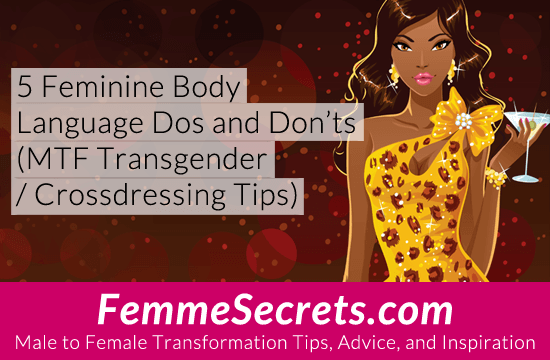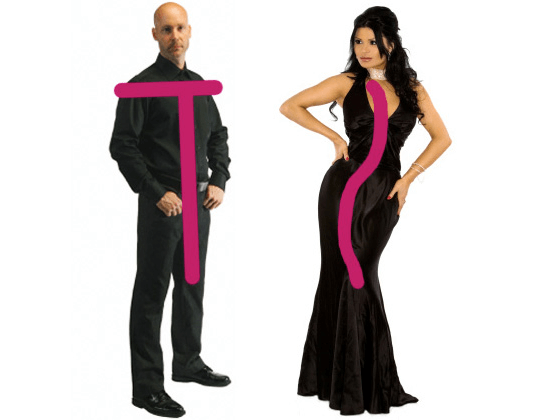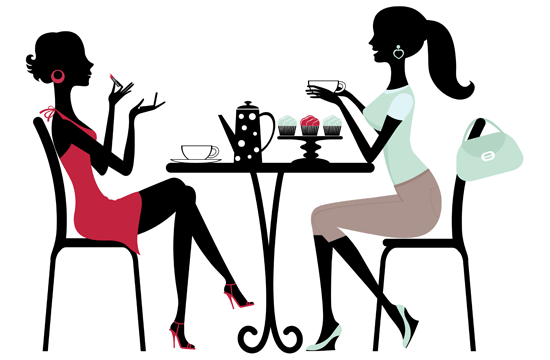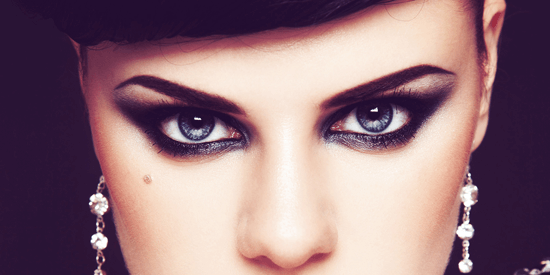
Body language is a big part of your feminine image. In fact, it counts for over 50% of the impression you make on people.
Is your body language telling the world that you’re a fabulous female? In not, it can be fixed!
Body language consists of:
- Posture
- Gestures
- Facial expressions
- Eye contact
Here are 5 dos and don’ts for mastering confident, feminine body language:
1. DO work the S-curve

Curves are a classic feminine feature. Beyond a bubbly booty and ample bosom, you can use your posture to enhance the curves of your body. Create an S-curve by putting your weight on one leg and pushing your hip out.
Contrast this to a more masculine posture where the weight is evenly distributed between both legs. This creates a more square and angular silhouette.
Here are some tips for working the S-curve:
- DO keep your weight on one side of your body instead of centered.
- DON’T exaggerate this posture. It should look natural.
- DO work the s-curve when you’re seated by crossing your legs or sitting with your weight on one hip.
2. DON’T take up too much space

A wide, open body position is considered a “power pose.” That’s why you often see men spread their legs and lean forward at the shoulders. They’re essentially puffing themselves up to look larger than they are.
On the other hand, a more closed position will make you look more feminine and elegant. It also makes you appear physically smaller.
You already know that a lady keeps her knees together. But beyond that, you should keep your elbows in and avoid taking up too much space with your limbs. (By keeping your feet tucked close to your chair, for example.)
Here are some additional tips:
- DON’T slouch in an attempt to appear shorter or smaller.
- DO stand and sit with lifted posture. Think “tall” instead of “wide” with your body posture.
3. DO mind your gestures

Gestures are an important part of body language. Women tend to be more expressive with their gestures than men. Next time you’re out, notice the way women use their hands and bodies to express ideas when they talk.
To master fluid, feminine gestures:
- DON’T make jerky or clumsy movements. Keep your elbows tucked in and don’t move too quickly. Practice making slow, smooth movements in front of a mirror.
- DON’T overdo your gestures. Observe women to get an idea of the correct balance.
- DON’T fidget. Avoid nervous movements like twirling your hair, shaking your leg, or tapping your fingers.
4. DON’T forget your facial expressions

The expressions you make say as much as the words that come out of your mouth. If you’re feeling nervous, it’s easy for this to be reflected on your face. On the other hand, a pleasant facial expression puts people at ease and helps you get the respect and acceptance you deserve.
Tips to keep in mind:
- DON’T wear a stoic expression. What feels “neutral” to you may come across as grumpy to others. (AKA “resting bitch face.”)
- DO put on a pleasant face. Keep the corners of your mouth turned up slightly. This also serves as a natural facelift!
5. DO make alluring eye contact

Eye contact is a major way to gauge a person’s personality. People who don’t make eye contact appear insecure or as if they’re hiding something. People who look you in the eye appear confident and sincere.
Here’s how to use eye contact to make a feminine impression:
- DON’T avoid people’s eyes. Be proud of who are you are and look people in the eye.
- DO make eye contact and hold it for a second or two. (But not too long unless you want people to think you are trying to seduce or intimidate them!)
Let’s talk body language!
Body language is a fascinating topic and these dos and don’ts are only the tip of the iceberg. Let’s continue the conversation below!
What other subtle body language differences have you noticed between men and women? Do you have any other tips to pass along?
Please share in the comments below!
Love,
Lucille
 P.S. Want to learn more about how to to master your feminine presentation? Sign up for my free 3-part Male to Female Makeover Course here!
P.S. Want to learn more about how to to master your feminine presentation? Sign up for my free 3-part Male to Female Makeover Course here!
The post 5 Feminine Body Language Dos and Don’ts (MTF Transgender / Crossdressing Tips) appeared first on .